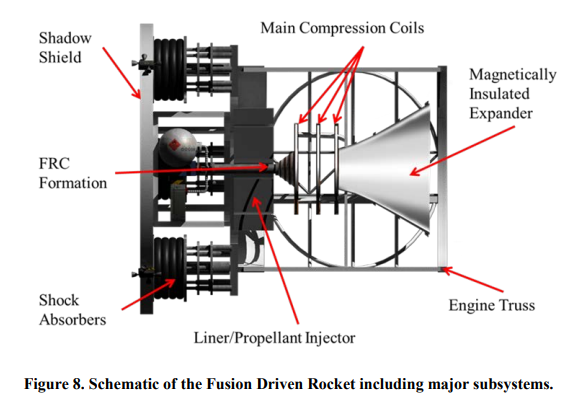
Proxima Centauri b, the closest known exoplanet potentially within the habitable zone of its star, continues to captivate the scientific community. Located just over four light-years away, it presents a tantalizing target for exploration. However, the vast distances and current technological limitations have constrained most proposed missions to mere grams, relying on solar sails or pushing lasers to propel them. But a new perspective from Virginia Tech graduate Amelie Lutz suggests that fusion propulsion systems could revolutionize our approach to interstellar travel, enabling a more substantial mission to our nearest potentially habitable neighbor.
Amelie Lutz’s Master’s Thesis explores the feasibility of using fusion propulsion to send a probe weighing several hundred kilograms to Proxima Centauri b. Her innovative approach could potentially allow a probe not only to reach the exoplanet but also to enter orbit, providing unprecedented opportunities for data collection and analysis.
The Promise of Fusion Propulsion
Fusion propulsion, a concept long confined to the realm of theoretical physics, offers a promising solution to the challenges posed by interstellar distances. Unlike traditional chemical rockets or the more recent solar sail technology, fusion propulsion could provide the necessary thrust for long-duration space missions. By harnessing the power of nuclear fusion, similar to the processes that fuel the sun, spacecraft could achieve speeds previously thought unattainable.
According to Lutz, the key advantage of fusion propulsion is its potential to deliver a continuous thrust over extended periods, drastically reducing travel time to distant stars. “With fusion propulsion, we could cut the travel time to Proxima Centauri b from tens of thousands of years to just a few decades,” she explains. This breakthrough could open new avenues for exploration and potentially redefine our understanding of space travel.
Challenges and Considerations
While the potential of fusion propulsion is immense, several significant challenges remain. The technology required to achieve controlled nuclear fusion in a spacecraft is still under development, with researchers around the world striving to create a viable fusion reactor. Additionally, the engineering challenges of integrating such a reactor into a spacecraft are formidable.
Despite these hurdles, Lutz remains optimistic. “Theoretical models suggest that fusion propulsion is feasible, and ongoing research is bringing us closer to making it a reality,” she notes. The development of fusion propulsion systems could also have far-reaching implications beyond space exploration, potentially revolutionizing energy production on Earth.
Historical Context and Future Implications
The quest to reach Proxima Centauri b is reminiscent of past exploratory endeavors, such as the voyages of discovery in the Age of Exploration. Just as those journeys expanded our understanding of the world, interstellar travel could dramatically broaden our knowledge of the universe.
The implications of successfully sending a probe to Proxima Centauri b are profound. It could provide insights into the conditions on potentially habitable exoplanets, informing the search for extraterrestrial life. Moreover, the technological advancements necessary for such a mission could spur innovation across various fields, from materials science to energy production.
“By the Numbers: Proxima Centauri b is located 4.24 light-years away. With current technology, it would take over 70,000 years to reach. Fusion propulsion could reduce this to a few decades.”
As researchers like Amelie Lutz continue to push the boundaries of what is possible, the dream of visiting other star systems becomes increasingly tangible. The development of fusion propulsion systems represents a significant step forward, potentially transforming our approach to space exploration and our place in the cosmos.
In the coming years, the scientific community will be closely watching advancements in fusion technology, eager to see if these theoretical possibilities can be turned into practical realities. The journey to Proxima Centauri b may still be a distant goal, but with innovative thinking and persistent effort, it is a goal that seems ever more achievable.






